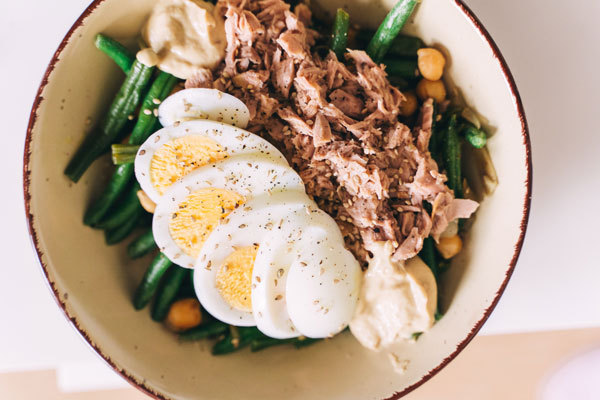Protein is the primary building block of the human body and therefore should comprise an essential part of a growing child’s diet. It plays so many important roles in a child’s development. It is involved in pretty much every physiological process that makes them into strong young adults, such as building muscle, aiding brain development, developing the immune system, etc. Yet, a large percentage of Indian children do not get enough protein in their diet.
Did you know that 54% of Indian children are not growing well? They are either too short or too thin, or overweight. An Indian child should consume approximately 0.8-0.9 gms protein per kg body weight per day. Meaning if your child is around 25 kgs, they need about 22 grams of protein a day. It seems like a small amount, right? But unfortunately, given that Indian diets are mostly cereal-based, this requirement is often not met.
So how do you make sure that your child is getting enough protein to meet their daily requirements? Simple, just follow the tips and tricks given below:
Know your protein sources
Foods such as milk and milk products such as curds, paneer and cheese, soy, eggs, chicken, and meat contain good amounts of protein. If you are vegetarian, then dals, whole pulses and millets become a major source of protein in your child’s diet. To make your meal planning easier, here’s a list of foods and the approx amount of protein it gives:
- Curd (200 gms) = 6 gms
- Cow’s milk (200 ml)= 6.5 gms
- Paneer (50 gms): 9 gms
- Peanuts (50 gms): 12 gms
- Egg (1 medium): 8 gms
- Chicken breast (50 gms): 11 gms
- Whole Moong (30 gms): 6.5 gms
Combine cereal and pulse to oomph up the protein quality
It is important to remember that protein present in dals or pulses is not of great quality when consumed alone. However, if you combine them with cereal, then you have a winner!! Indian traditional foods such as khichdi, idli, dosa, rajma chaawal, dal parathas which are combinations of cereals and pulses, are some examples of foods with a better quality complete protein compared to when either a pulse or cereal is eaten by itself.
Mix up your protein sources
Many folks think that dal, roti and rice every day is enough to meet the protein requirements. However, this is not adequate, including other protein sources such as milk, curd, cheese, nuts (peanuts, cashew, walnuts, almonds), seeds (sunflower, flax, pumpkin), soy, and, if feasible, non-vegetarian foods is essential as well. Mixing up protein sources in the diet is especially important for vegetarians and, well, which child does not love variety. You can go one step further and even rotate your pulses. Don’t stick to just tur; give other pulses such as moong, channa and dried peas a chance in your kitchen.
Here are few myth busters on protein:
- Protein is required by every child and not just by children in active sports.
- Protein foods are not difficult to digest.
- Green leafy veggies and fruits are not good sources of protein.
- Consumption of vitamins and minerals should not be prioritised over protein intake.
- Protein intake does not lead to weight gain in children.
Aim to include protein in at least 3 out of 4 major meals
Include food with complete protein in at least three meals that a child usually eats. Some meal ideas are as follows:
- Breakfast: Idli/Eggs/Dal Paratha/Besan Chilla/Shredded Chicken Sandwich
- Lunch: Amti Dal Rice/Chicken Biryani/Vegetable Biryani with paneer or soy nuggets/Curd Rice/ Lemon Rice with french beans poriyal
- Snack: Chana Chaat/Peanut Chaat/ Dhokla/Paneer Sandwich/Peanut Butter Banana Smoothie
- Dinner: Khichdi/Chapathi with fish curry or sprouts curry or paneer Bhurji/Pessaratu
Increase the protein density of a food or meal:
Traditional Indian foods have always been about the right combination of foods that help increase the nutrient density of foods or meals. So the puttu would never be without kadala curry, neer dosa would always be with a dal and coconut chutney, and sabudhana khichdi or poha would always have a generous portion of high protein peanuts. Taking this as an inspiration, don your chef’s cap and cook up a storm of protein-rich meals that your little one would love. However, if you are stressed on time and want a simple hack to pack in as much protein punch as possible into a single dish, then here are some ideas:
- Add some besan or soya flour to your regular chapati flour.
- Sneak in more protein in your child’s smoothie by adding a spoonful of skimmed milk powder.
- Layer your kid’s sandwich not with high-fat mayo but with hung curd or pureed paneer.
- Roll up that roti with chickpea hummus or nut butter for a sweet twist.
- Glam up a simple fruit salad by topping it with coarsely crushed peanut or almond chikki (make sure the chikki is made with jaggery and not sugar).
- Replace the coconut filling in that Puran Poli with a dal-jaggery or khoya-jaggery filling.
So there you go! These are some easy ways to pack in more protein in your child’s diet. Keep in mind the quality, quantity and variety of protein while planning meals and very soon, you will be ticking the box of meeting 100% of the protein requirements in your kid’s diet.
At Cuddles Foundation, we create diets for children with cancer as per their medical condition and nutritional status. Beating childhood cancer starts with eating well. Join us and feed the fight.
Written by:
Dr Sripriya Venkiteswaran
Content Consultant
Cuddles Institute of Clinical Nutrition
Disclaimer: The protein values of foods given in this article are only approximated. Protein values may vary across brands. For the exact amount, refer to on-pack information whenever available.
References:
- https://www.unicef.org/media/60841/file/SOWC-2019-SA.pdf Accessed on 28th August 2021
- https://www.orfonline.org/expert-speak/indias-protein-deficiency-and-the-need-to-address-the-problem/ Accessed on 28th August 2021
- Nutrient Requirements for Indian 2020 ICMR-NIN
- https://righttoprotein.com/assets/pdf/Infographic-Indias-Protein-Paradox.pdf Accessed on 14th September 2021
- Indian Food Composition Tables 2007.





